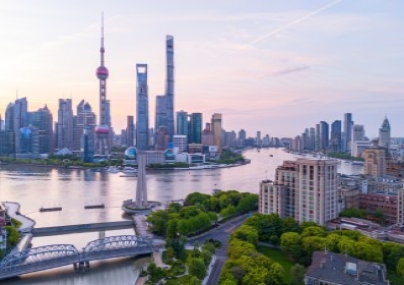China’s antitrust authorities have acted as the last obstacle on the planet to Glencore's $30 billion takeover of miner Xstrata.
As the primary merger reviewer in China’s three-ministry antitrust enforcement structure - namely, the Ministry of Commerce (MOFCOM), the National Development and Reform Commission (NDRC, in charge of price fixing) and the State Administration for Industry and Commerce (SAIC, in charge of non-price allegations) - the MOFCOM had stood in the way of the world’s biggest ever takeover in the mining industry until the commodities trader agreed to sell a $5.2 billion mining project to ease its grip on copper. The 14-month deal consummated two weeks later.
In its conditional approval issued in April, the Anti-Monopoly Bureau (AMB) of MOFCOM demanded Xstrata's Las Bambas mine in Peru to be sold by June 2015. Glencore is also requested to fulfill an eight-year commitment of providing a minimum of 900,000 tonnes of copper to Chinese clients per year. The price for at least 200,000 tonnes will be decided in accordance with the benchmark level. It also ordered the supply of zinc and lead concentrates on "fair and reasonable" terms between 2013 and 2020.
The case was joined a few days later by another conditional clearance made by the AMB. Japanese trader Marubeni Corp was finally given the green light to acquire U.S. grain merchant Gavilon at $5.6 billion, a deal which was originally scheduled to close in September 2012 but was pushed back repeatedly.
After holding up the merger for months, the AMB in its announcement said Gavilon and Marubeni would be required to maintain separate, independent trading units when selling soybeans to China, with strict firewalls to prevent any exchange of market information. Marubeni would have to buy beans from Gavilon's vast U.S. network at an arm's length.
China’s antitrust regulator, being probably the newest of the world’s major economies, is also viewed as the toughest as well as the least predictable.
"It's to the point where China is one of the key concerns that global companies now have when doing merger clearance deals," said Shanghai-based antitrust expert Peter Wang, a partner with Jones Day.
Industrial weapon?
The delayed approvals and strict requirements have drawn attention to the growing power of China’s antitrust authority followed by criticism.
“What we’re seeing in China is protracted pre-filing contacts and lengthy reviews … significantly delaying deals which have already been through EU and U.S. review,” says Catriona Hatton, partner at Brussels-based law firm Baker Botts.
Some complain that China is using the antitrust regime as an industrial policy tool. For instance, in 2009, MOFCOM turned down Coca-Cola’s proposed purchase of Chinese juice maker Huiyuan, the only case it has rejected so far. It might be coincidence that both the latest deals mentioned above took place within the commodities sector. But due to Beijing’s increased concern over the supply of vital raw materials, these two deals were scrutinised closely and at length, and were each given remedies addressing the “concern about security of supply for an essential input” suggests Yee Wah Chin, New York-based antitrust lawyer at Ingram, Yuzek, Gainen, Carroll and Bertolotti.
Such frequently reported opinion is not agreed on by all, though. Gregory Puff, partner at and head of Akin Gump Strauss Hauer & Feld’s Hong Kong office, says this perception is popular with the press but it is not necessarily what insiders would say in terms of their own analyses.
“There is plenty of noise about antitrust being a kind of secret weapon to block some transactions people don’t like … Normally, I would say that’s not the case,” says Puff.
Critics also claim authorities intervene less in the consolidation of Chinese companies, which was encouraged by state policy, while constraining multinationals. The U.S. Trade Representative says 90 percent of MOFCOM- registered deals since 2008 involved multinationals. But Shang Ming, director-general of AMB, denies the claim, saying it is “superficial” to conclude that the AMB had discriminated against foreign companies or their enforcement was biased. He adds that this was because multinationals are more likely to be big enough to reach the threshold of filing, and they have been very active in merger and acquisitions since the global financial crisis.
“The reason we made restrictive or prohibitive decisions was that we found they have competition problems during our review. In most cases, it was due to the high market share they possess,” Shang told a press conference.
Puff says any antitrust regulator would be unhappy to be labelled an extension of the political will of whichever government they serve.
“My experience with antitrust regulators is that in China as well as elsewhere, they take their job seriously, and they have a specific mandate to address each case on its merits,” he adds.
Short of hands
AnJie Law Firm partner Michael Gu also believes the AMB makes decisions mainly based on professional judgement. The lengthy process of review, he says, is mainly because of the understaffing in the institution.
The AMB is reported to have only 10 to 12 case handlers, and all deals have to go through a pre-notification phase conducted by a department with just five people. Such a small team oversaw a total of 201 concentration filings, officially accepted 186 of them, and concluded 154 cases during the period between Jan. 1, 2012 and Dec. 26, 2012. A hundred and forty two of these cases were approved without any conditions, accounting for 92 percent of all concluded cases.
As a result, the six conditionally approved cases in 2012 all dragged on for more than 130 days, and some like the Google/Motorola and Walmart/Niuhai mergers even exhausted the time limit of 180 days.
In contrast, AMB’s U.S. counterpart - the Federal Trade Commission's Bureau of Competition has hundreds of employees and at least 150 lawyers and 80 economists handling case reviews. And the European Commission has 124 officials and external experts assessing mergers, plus a team of 25 economists who assist the overall antitrust division.
On the other hand, the Chinese anti-monopoly law sets up a relatively low threshold for a mandatory pre-merger filing, such as $63 million of revenues in China for each of at least two parties in China. This means any merger anywhere on the planet could easily stir up a MOFCOM action as long as the (foreign) companies have relatively small business in China. It inevitably results in the increasing amount of deals going to the thinly-manned AMB.
Another important factor prolonging the approval process is China’s three-phase review system of 30, 90 and 60 days, while the U.S. and the EU each have only two phases. The majority of cases are approved during phase 2. What’s more, there is a formal pre-filing intake process, during which the regulators question the filer after receiving a notification and decide whether to accept the filing at all and initiate phase 1. It took more than 50 days on an average for the AMB to accept a filing over the past two years.
In addition, Wang and his colleagues at Jones Day note that the need for time to gather inputs from other stakeholders including other government ministries, trade associations, competitors, supplier and clients also contributed to the lengthy procedure.
It is not as if the AMD hasn’t realised the lag in its approval process. To tackle the problem, it has recently released its draft regulation named Interim Provisions on Standards applied for Simple Cases of Concentration of Undertakings (Provisions on Simple Cases).
“We process many cases for more than 30 days, more than the average of other regions and countries. Therefore, we hope to change this by applying the ‘simple procedure,’” said Director-General Shang.
Speeding up?
The draft of Provisions on Simple Cases, currently open for public suggestions, is expected to come into force in the second half of this year. Practitioners believe that it could speed up the merger review process.
“Without a ‘fast track,’ all cases have to go through the standard programme, which would certainly be time consuming,” says Gu.
The “simple cases” are those with little or no possibility to raise competitive concerns. Shang explains that normally it would not be a problem if the combined market share of the parties after the merger is lower than 10 percent. In fact, the draft Provisions employ the E.U. standards setting the bars at 15 percent post-merger share for horizontal mergers and 25 percent pre-merger share of each party for vertical mergers.
The AMB will also adopt HHI - Herfindahl-Hirshmann Index, ranging from zero to 10,000 in relation to the industry and an indicator of the amount of competition among them - as a key indicator to measure market concentration. Gu suggests when the market HHI is lower than 1,000 or 800, it usually indicates a low concentration degree and, therefore, a merger is unlikely to cause substantive harm to the market competition.
Such cases, under the Provisions, can get clearance more quickly since they’d need “less consultation and fewer documents,” according to Shang, who aims to clear the simple cases within 30 days, the duration of the phase 1 review. However, it is not yet entirely clear what consequences will flow from being identified as a “simple” case, as MOFCOM retains the power to withhold or revoke the classification, says partner Ronan Harty of Davis Polk & Wardwell.
“The consequences could be access to a short-form merger filing as in the EU, or other procedures for more efficient decision making on transactions that do not raise concerns with MOFCOM, including a shorter time period for the review of simple cases,” he says.
Gu adds that the current version of the draft does not address any procedural issues with respect to the “fast track,” such as the precise requirements for submission of documents, short-form decisions, and review timeline, and so on.
“These specific issues may need to be clarified either in draft provisions or by a separate regulation,” he said.
Nevertheless, the Provisions on Simple Cases signify that MOFCOM is willing to lighten some of the AMB’s workload and allow it to focus its limited resources on the more important cases with real competition concerns.
Remedies
Another draft provision MOFCOM has issued for public comment is the Provisions on Imposing Restrictive Conditions of Concentration of Undertaking (Provisions on Conditions). The 38-article amendment is expected to replace, and obviously improve, the current 13-article version of Interim Provisions of the Ministry of Commerce on Implementing Assets or Business Divestment Related to Concentration of Undertakings effective since 2010.
China’s merger remedies sometimes lead to controversy. In the Glencore/Xstrata deal mentioned above, Beijing’s demand that the Las Bambas copper mine be sold was reported as intended in favour of its own national champions, as two companies linked to Chinese state-backed groups are weighing rival bids for the $5 billion-plus project.
“Sometimes, the remedies have nothing to do with antitrust concerns,” states Daniel Sokol, professor of law at the University of Florida's Levin College of Law.
However, the newly amended draft Provisions on Conditions are “encouraging” in the sense “it will improve the transparency of MOFCOM’s enforcement,” suggests Gu.
The new draft further clarifies the criteria and procedure for amendment and repeal of restrictive conditions. It permits the parties to propose their own remedies and similar to the process in the U.S. and the EU, MOFCOM may finalise its decision on remedies in consultation with other agencies, third-party businesses, and/or consumers. It also details procedures as to the proposal, assessment, implementation, and supervision of restrictive conditions and liabilities for non-compliance.
In particular, the proposed Provisions address the issue of structural remedies and behavioural remedies, which are not covered in the current interim provisions. It is important because in recent years, China has demonstrated its willingness to impose behavioural remedies in both horizontal and vertical transactions, according to Miranda So, Hong Kong-based Davis Polk partner.
Structural remedies, such as divestiture of assets, are commonly used in the U.S. and Europe. The new regulations provide detailed guidance on how the divestitures should be accomplished. In the meantime, behavioural remedies including mandate access requirement and non-discrimination provisions are preferred by Chinese antitrust authorities. Although neither the Provisions nor the officials have declared this, the fact is in practice - MOFCOM seems to use more behavioural remedies than structural remedies when imposing conditions, as displayed by statistics related to MOFCOM’s decisions.
AnJie’s Gu notes that such a tendency has been “a visible phenomenon” since the implementation of China’s Anti-Monopoly Law. Clifford Chance’s Beijing-based antitrust lawyer Ninette Dodoo also observes that the track record seemed clear - that the vast majority of remedies have been “non-structural.”
However, the effectiveness of the remedies should be judged case by case, cautions Gu.
“Sometimes, behavioural remedies are easier to accept for both parties, as structural remedies, such as divesting certain assets, sometimes affects the transaction,” says Gu. “If the divestiture involves overseas assets, there are also difficulties in enforcement and supervision.”
He suggests that requirements such as independent internal management or information firewalling are probably convenient means to do so for both parties.
So, meanwhile, believes China has demonstrated its willingness to impose behavioural remedies in both horizontal and vertical transactions.
“The draft rules may signal that these recent remedies are not isolated events, but part of a comprehensive regulatory programme that will encompass behavioural remedies going forward,” she says.
Gu, meanwhile, suggests the draft include more detailed provisions on supervisory trustees and their responsibility for supervising behavioural conditions before it comes into force to address public concerns on the supervision over the implementation of behavioural conditions. He also points out that the default 10-year implementation period for the behavioural conditions might impose undue burden on the parties, and should be more realistic and limited.
标题> 重重关卡将变快速通道?- 中国的反垄断新规
中国的反垄断审查已被报道称为全球并购的一个新障碍,因为多个高规格的交易在经中国监管部门严重延误后才获得附条件批准。反垄断审查是否真的已成为一个政策工具,还是只是媒体的凭空臆测?新发布的《附条件规定》和《简易案件标准》是否能如律师们预计的那样有助改善处理程序?
作者: Liu Zhen
补充报道:路透社Michael Martina
中国的反垄断部门在嘉能可以300亿美元收购矿业公司斯特拉塔一案中扮演了最后一关大魔王的角色。
作为中国三部委 [即,商务部、国家发改委(负责价格审查)和国家工商总局(负责非价格方面违规的指控)]反垄断执法架构中的主要并购审查部门,商务部成为了全球有史以来最大的矿业收购交易的最后一个拦路虎,直到这家大宗商品贸易商同意出售一个价值52亿美元的铜矿项目,以降低其对铜市场的掌控。这宗持续了14个月的交易才终于在两周后尘埃落定。
在四月份出具的附条件批准书中,商务部反垄断局(反垄断局)要求嘉能可在2015年6月以前出售斯特拉塔公司位于秘鲁的拉斯邦巴斯(Las Bambas)铜矿 。嘉能可还被要求履行一项为期8年的承诺,每年向中国客户至少供应900,000吨铜。其中至少200,000吨铜的价格将按市场基准价格确定。批准书还要求嘉能可从2013年到2020年期间按照“公平合理”的条款供应锌精矿和铅精矿。
该案获批后几天,反垄断局又附条件通过了另一起并购。日本贸易商丸红株式会社最终获准以56亿美元的对价收购美国谷物贸易商高鸿公司,该交易原定于2012年9月完成,但被多次推迟。
在将该并购案押后多月以后,反垄断局在公告中要求维持丸红公司和高鸿公司向中国出口和销售大豆业务的分离与独立,以严格的防火墙来防止市场信息的交换。丸红公司必须按照公平交易原则从高鸿公司庞大的美国网络采购大豆。
中国的反垄断监管机构可能是全球主要经济体中最新设立的一家,也被视为是最严格、最捉摸不定的一家。
“可以说目前中国已经成为全球企业在进行并购审查时的主要担心点之一。”众达律师事务所上海代表处合伙人、反垄断专家王智平说道。
小标题>产业武器?
批准的拖延和严格的要求使得人们注意到中国反垄断部门越来越大的权力,当然也引来许多批评。
“我们在中国看到的是漫长的预申报文书往来和久拖不决的审查……使得已经通过了欧盟和美国审查的交易受到严重拖延。”布鲁塞尔的贝克博茨(Baker Botts)律师事务所合伙人Catriona Hatton表示。
一些人抱怨中国正利用反垄断制度作为一种产业政策工具。例如,2009年,商务部否决了可口可乐公司对中国果汁制造商汇源的收购,这也是其禁止的唯一一宗收购案。而上述两宗今年的最新交易都发生在大宗商品行业可能纯属巧合。但中国的确日益关注对其非常关键的原材料供应,而监管机构对这两项交易的审查也异常漫长而严格,并分别附加了救济措施,以期解决其“对关键原材料供应安全的担忧”,纽约英格拉姆-于则克-盖嫩-卡罗尔和贝托洛提(Ingram, Yuzek, Gainen, Carroll and Bertolotti)律师事务所反垄断律师陈懿华(Yee Wah Chin)这样认为 。
但并非所有人都同意这些屡见报端的意见。艾金•岗波律师事务所香港办公室负责人Gregory Puff认为,这一观点在媒体中很畅销,但业内人士如果独立分析后未必会如此看。
“有关反垄断成为阻止人们不喜欢的那部分交易的一种秘密武器的说法有很多……但一般来说我并不同意这一看法。”Puff合伙人说。
批评者还称中国政府对中国企业的并购案干预较少,因为这是国家政策鼓励的,而对跨国企业则限制较多。美国贸易代表表示2008年以来商务部立案的交易中90%都涉及跨国企业。但反垄断局局长尚明对该说法予以驳斥。他说认为反垄断局歧视外国企业或者执法有偏向的看法只看到了“表面现象”。他补充说,这是因为跨国企业规模更大,更可能达到交易立案规模的门槛,同时这些企业在全球金融危机后也一直活跃于并购市场。
“之所以最后做出了限制性或者禁止性决定,是由于在案件审查中发现了竞争问题。绝大多数案件都是因为它们(外国企业)占有的市场份额相当高。”尚明在一次媒体发布会上表示。
Puff说任何反垄断部门都不愿意被打上是政治意愿延伸的标签,不论他们为哪个政府服务。
“我与反垄断部门打交道的经验是,中国的反垄断部门和其他地区的一样,他们非常认真地对待自身的工作,并特别被要求按照具体案件的是非曲直做出处理。”他说。
小标题>人手不足
安杰律师事务所合伙人顾正平也认为反垄断局的决定主要基于专业判断。而对于漫长的审查流程,他说这主要是因为该机构人手不足所致。
据报道,反垄断局只有10-12名案件处理人员,所有交易必须经过一个预申报阶段,但处理预申报的部门只有五个人。从2012年1月1日至2012年12月26日,这支小小的团队审查了总计201宗经营者集中申报,正式受理了其中186宗,并结案154宗。其中142宗交易未附加任何条件而获得批准,占所有结案案件的92%。
因此,2012年的六宗附条件批准的案件全部耗时130天以上,部分甚至用尽了180天的最高期限,例如谷歌收购摩托罗拉移动案和沃尔玛收购纽海控股案。
与此形成鲜明对比的是,反垄断局的美国同行,美国联邦贸易委员会竞争局,拥有数百名员工,至少150名律师和80名经济学家负责案件审查。而欧盟委员会拥有124位官员和外部专家负责并购审查,另有25人的经济学家团队协助整个反垄断部门。
一方面,由于中国反垄断法规定的强制并购申报标准较低(至少两方当事人在中国的收入分别达到6300万美元),这意味着只要当事(外国)公司在华拥有相对较小的业务,全球其他地区的任何并购交易都很可能触发商务部的行动。这导致越来越多的交易涌入人手单薄的反垄断局。
另一个导致审批过程漫长的重要因素是中国采用三阶段的审查体系,每个阶段分别持续30天、90天和60天。而美国和欧盟都只有两个阶段。且中国的大部分案件都在第2阶段获批。另外,中国还存在一个形式上的预申报阶段,期间监管部门在收到申报材料后可向申报人提出疑问,再根据答复内容决定是否立案以启动第一阶段审理。过去两年,反垄断局受理申报平均需要超过50天时间。
此外,王智平律师及众达律师事务所其他律师也指出,向其他利益相关人征求意见所需的时间也造成程序冗长,利益相关人包括其他部委、行业协会、竞争对手、供应商和客户等。
反垄断局也已经认识到审批流程缓慢的问题。为了解决这一问题,该局最近发布了《关于经营者集中简易案件适用标准的暂行规定(征求意见稿)》(《简易案件标准》)。
“许多案件的处理周期超过30天,超过其他地区和国家的平均水平。因此,我们希望通过‘简易程序’改变这种情况。”尚明局长表示。
小标题>进程加快?
《简易案件标准》草案目前正在公开征求意见,预计将在今年下半年实施。业界认为这可能会加快并购审查的流程。
“由于缺乏‘快速通道’,所有案件必须走标准流程,这肯定比较耗时。”顾正平说。
“简易案件”是指引发竞争性问题的可能性极低或为零的案件。尚明解释道,在正常情况下如果各方合并后的市场份额不足10%,就不会造成什么竞争性问题。实际上,《简易案件标准》草案采用了欧盟的标准,即横向合并中合并后当事人的集中市场份额低于15%,或者纵向合并中每一方合并前的市场份额均低于25%。
反垄断局还将采用赫芬达尔-赫希曼指数(HHI指数)作为衡量市场集中度的一个关键指标。HHI指数是衡量产业集中度和竞争程度的指数,分值为0至10,000。尚明指出当市场的HHI指数低于1,000或800时,通常说明集中度较低,因此并购不太可能会导致对市场竞争的实质性损害。
根据《简易案件标准》规定,此类案件可以更快通过审查,因为“需要征求的意见较少、文件也较少”,而尚明表示,简易案件争取在30天内通过审查,即在第一阶段审理时批准。但达维律师事务所合伙人Ronan Harty表示,被认定为“简易”案件后将有哪些影响尚不完全明确,因为商务部保留撤销或取消认定的权力。
“结果可能是对不引起商务部关注的交易允许实施和欧盟一样的简要并购申报,或者其它决策效率更高的程序,包括缩短简易案件的审理期限。”他说。
顾正平补充道,现行草案并未解决关于“快速通道”审理的程序性问题,诸如需要提交的文件、快速决定的做出以及审理期限等明确规定。
“这些具体事项需要在正式颁布的规定或者另行颁布的规定中进行阐明。”他说。
尽管如此,《简易案件标准》表明,商务部愿意减轻反垄断局的部分工作负担,使其能集中有限的资源处理引发真正竞争担忧的重要案件上。
小标题>并购救济
另外,商务部还发布了《关于经营者集中附加限制性条件的规定(征求意见稿)》(《附条件规定》)。这份38条的修正规定将取代并明显完善现行13条的《商务部关于实施经营者集中资产或业务剥离暂行办法》,后者从2010年起开始生效。
中国的并购救济有时会引发争议。在上述嘉能可收购斯特拉塔一案中,中国政府提出的出售拉斯邦巴斯铜矿的要求被一些观点认为是为了它自己的国家龙头企业,因为两家与中国国有集团有关的公司已经在参与竞标这个50多亿美元的项目。
“有时救济与反垄断问题毫无关系。”佛罗里达大学莱文法学院法学教授Daniel Sokol称。
但顾正平表示,新修订的《附条件规定》“令人鼓舞”,因为“它将提高商务部执法的透明度”。
新草案进一步明确了限制性条件修改和废止的标准和程序。它允许当事人提出自己的救济方案,并且与美国和欧盟的程序类似,商务部可以在征求其它机构、第三方企业和/或消费者的意见后就救济方案作出最后决定。另外,草案也详细规定了限制性条件的提出、评估、实施和监督的程序以及违反条件的法律责任等问题。
尤其值得注意的是,《附条件规定》草案解决了结构性救济和行为性救济这一当前暂行办法并未解决的问题。达维律师事务所合伙人Miranda So称这非常重要,因为近年来中国一直表现出它倾向于对横向和纵向交易都实施行为性救济措施。
资产剥离等结构性救济措施在美国和欧洲比较常用。新规定对如何实施剥离提出了详细指引。此外,包括强制性准入要求和非歧视性规定等行为性救济措施是中国反垄断部门所偏好的。尽管《附条件规定》和官方都未明确规定,但在实践中,如对商务部决定的统计所显示,商务部似乎在设施限制性条件时更多使用行为性救济措施而非结构性救济措施。
安杰律师事务所的顾正平律师指出,这种趋势从中国反垄断法实施以来就是“一个很明显的现象”。高伟绅律师事务所北京代表处反垄断律师杜宁也指出,历史记录明确显示绝大部分救济措施都是“非结构性的”。
但顾正平律师指出,救济措施的有效性应当具体案件具体分析。
“有时,行为性救济措施更容易为双方当事人所接受,因为剥离特定资产等结构性措施有时会对交易产生影响。”顾正平说。“如果剥离涉及境外资产,则可能面临执行和监督难的问题。”
他指出独立的内部管理或信息防火墙等要求可能对双方当事人更为方便。
So律师认为中国倾向于对横向和纵向交易都实施行为性救济措施。
“草案可能发出信号,显示这些近期的救济并非孤立事件,而是一套全面监管计划中的一部分,这套监管计划将在未来包含行为性救济。”她说。
因此,顾正平建议,针对公众对于该如何监督行为性救济的实施这一问题的关注,草案应在生效前针对监督受托人及其在监督行为性救济的实施方面的责任增加更多细节条款。他还指出,行为性救济的默认实施期限为十年,这或许会造成当事人过度的负担,因此应更现实一些,将其适当缩短.
Follow us onTwitter: @ALB_Magazine.
.jpg) takeover of miner Xstrata.
takeover of miner Xstrata.

